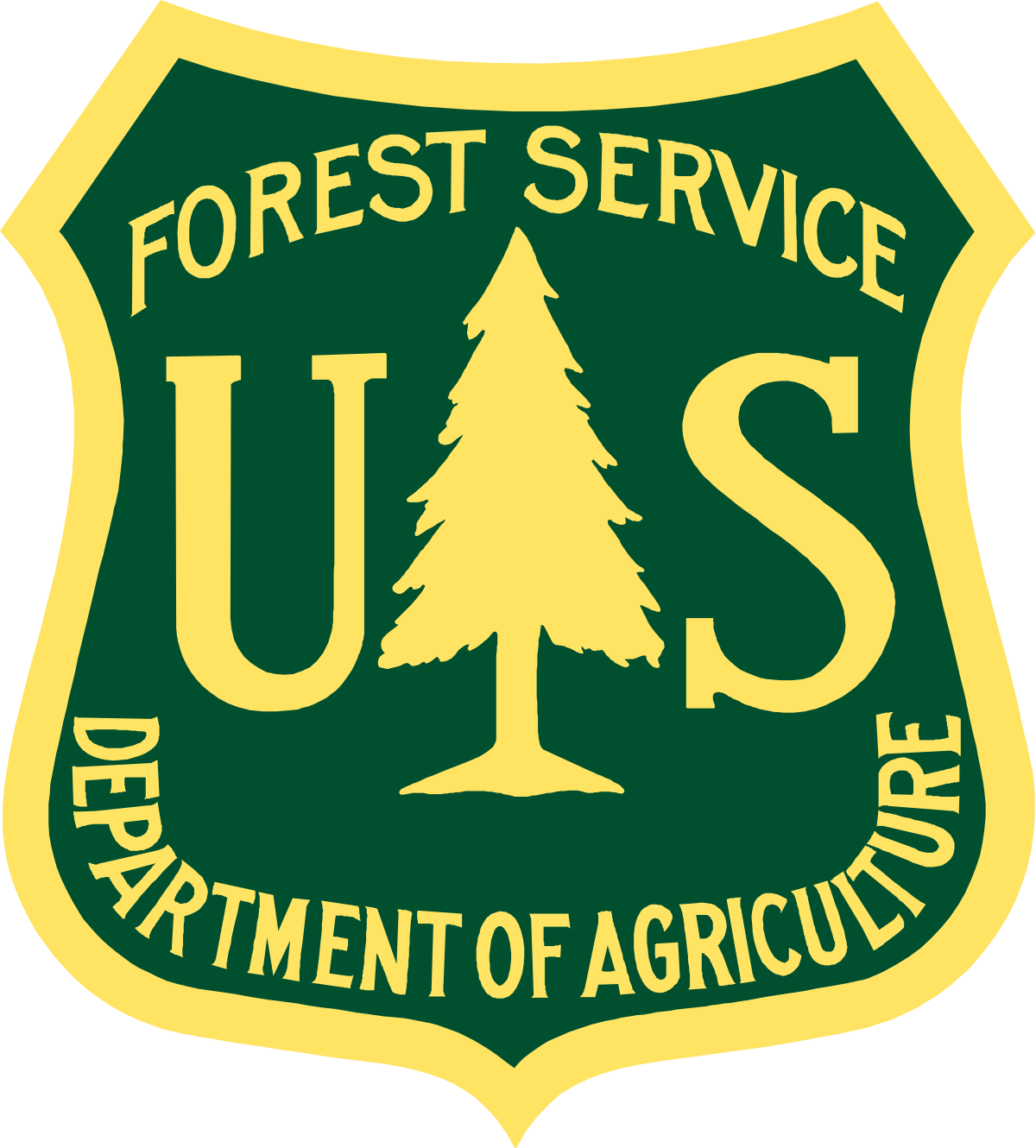Alpine Strategy Resources
Learn more about projects, partners, on-going research, and news items about the Alpine Strategy
Our Partners
Betty Ford Alpine Gardens and Denver Botanic Gardens have entered a formal partnership to build a strong team to accomplish the Objectives in the Strategy. However we cannot do this alone and we welcome other Gardens or Environmental Organizations to become working partners in this effort.

Founded in 1985 by the Vail Alpine Garden Foundation and named in 1988 in honor of former first lady Betty Ford, an internationally acclaimed collection of alpine plants in the Rocky Mountains
With a mission to protect the alpine environment through education, conservation and living plant collections, the vision of the Betty Ford Alpine gardens is to be the leading global advocate for alpine environments.
Betty Ford Alpine Gardens is an internationally acclaimed botanic gardens known for its alpine horticulture, education and conservation. Located in the small resort town of Vail, Colorado which attracts a global audience for its skiing and outdoor recreation, Betty Ford Alpine Gardens is the highest elevation botanical garden in North America situated at 8,200’ (2,700 m) in the central Rocky Mountains. The Gardens attracts more than 120,000 visitors annually to see its unique collection of alpine and mountain plants collected from around the world.

Denver Botanic Gardens features North America’s largest collection of plants from cold temperate climates around the world, as well as 7 diverse gardens that mostly include plants from Colorado and neighboring states.
The world’s first Xeriscape Demonstration Garden was created at the Gardens in 1986, and 2 years later its name was changed to Dryland Mesa. It was based on the “7 Principles” of Xeriscape, and includes drought-tolerant plants from the arid West and Mediterranean areas.
The Japanese Garden at the Denver Botanic Gardens
The Japanese Garden is called Shofu-en—the Garden of Wind and Pines. It was designed by Koichi Kawana in collaboration with Kai Kwahara.
The York Street location of the Botanic Gardens opened Denver’s 1st publicly accessible green roof.
The Denver Botanic Gardens also boasts the first conservatory in America that was made entirely of concrete and Plexiglas panes, each of which were designed to channel condensation to the sides of the walls so it would not drip on visitors. The Boettcher Memorial Tropical Conservatory was awarded landmark status in 1973
In 2020 the Gardens published Firsthand: Creating Gardens for All People, commissioned by CEO Brian Vogt, researched by Karen Peters, Davis Benson and Dan Obarski, and published by Beckon Books. The book won the Independent Book Publishers Association Benjamin Franklin Silver Award in the Coffee Table book category in 2021.
Canada's Royal Botanic Gardens

Botanic Gardens Conservation International

Memorial University of Newfoundland

United States Forest Service
Research
Updates on the North American Botanic Garden Strategy for Alpine Plant Conservation. Emily Griffoul, Conservation Scientist, Betty Ford Alpine Gardens. Rare Plant Symposium 2022
In The News
Mar 15, 2022
Get Wild: Preserving our precious Alpine wildflowers, Summit Daily, July 3, 2021
New N. American Strategy to Protect Alpine Plants, Colorado Gardener, May 5, 2021
Additional Resources
The following are additional resources included in the NABG Strategy for the Protection of Alpine Plants.
- An Online Flora of All Known Plants. http://worldfloraonline.org/
- Bell KL, Johnson RE (1980). Alpine flora of the Wassuk Range, Mineral County, Nevada. Madroño. 1980;27(1):25-35. https://www.jstor.org/sta- ble/41426120?read-now=1&refreqid=excelsior%3A92e30acec1e062d48b217b72e- b51e551&seq=1 – page_scan_tab_contents
- Bjork C. Northern Alpine list. 2019. Unpublished raw data
- Boland T. List of True Alpine Eudicots, Fern Allies, Ferns and Monocots of New- foundland and Labrador. 2019. Unpublished raw data.
- Botanical Capacity Assessment. Botanic Gardens Conservation International. https://www.bgci.org/usa/bcap
- Botanical Society of America. What Is Botany? 2017. http://botany.org/Resources/ Botany.php.
- Botanic Gardens Conservation International. http://www.bgci.org/.
- Building living plant collections to support conservation: A guide for public gar- dens. https://bgci.org/files/United States/MBC_Collections_Guide_2014.pdf
- Fowler JF, Nelson BE, Hartman RL. Vascular plant flora of the alpine zone in the Southern Rocky Mountains, USA. Journal of the Botanical Research Institute of Texas. 2014;8(2):611-636.
- Gerrish G. Botanical baseline survey (2011) of the University of Hawaii’s managed lands on Mauna Kea. Hilo (HI): University of Hawaii-Hilo; 2013.
- Global Mountain Biodiversity Assessment. https://www.gmba.unibe.ch
- Global Strategy for Plant Conservation. Botanic Gardens Conservation Internation- al. https://www.bgci.org/policy/gspc/
- Grunau L, Handwerk J, Spackman-Panjabi S, editors. Colorado Wildlife Action Plan: Proposed Rare Plant Addendum. Fort Collins, CO: Colorado Natural Heritage Pro- gram, Colorado State University; 2011.
- GSPC Toolkit: Targets. https://www.plants2020.net
- Hird A, Kramer AT. Achieving Target 8 of the Global Strategy for Plant Conserva- tion: Lessons Learned from the North American Collections Assessment. 13 Dec 2013. https://bioone.org/journals/annals-of-the-missouri-botanical-garden/vol- ume-99/issue-2/2011114/Achieving-Target-8-of-the-Global-Strategy-for-Plant-Conser- vation/10.3417/2011114.short
- Institute for Arctic and Alpine Research. https://instaar.colorado.edu/ IUNC Red List. https://www.iucnredlist.org
- Körner C. Alpine Plant Life: Functional Plant Ecology of High Mountain Ecosystems. Berlin: Springer; 2003.
- MacKinnon A, Pojar J. Alpine Plants of British Columbia, Alberta and Northwest North America. Edmonton: Lone Pine Publishing; 2013.
- Mason M. Introduction to Botany. 2017. http://www.environmentalscience.org/botany.
- Meades S, Hay SG, Brouillet L. Annotated Checklist of the Vascular Plants of New- foundland and Labrador. Sault Ste. Marie, ONT; 2000 Mar 25. http://www.digitalnat- uralhistory.com
- Nagy L, Grabherr G, Thompson D. Alpine biodiversity in Europe. Berlin: Spring- er-Verlag. 2003. Vol. 167, Ecological Studies.
- Native Plant Network. https://npn.rngr.net/
- North American Botanic Garden Strategy for Plant Conservation 2016-2020. http:// northamericanplants.org/
- Plants 2020: About the GSPC; 2018. http://www.plants2020.net/about-the-gspc/
- Porsild AE. Encyclopedia Arctica: unpublished reference work. 1947-51. 15 vol- umes. https://collections.dartmouth.edu/arctica-beta/html/EA06-12.html.
- Roberson EB. Barriers to Native Plant Conservation in the United States: Funding, Staffing, Law. Native Plant Conservation Campaign. Sacramento (CA): Center for Biological Diversity, California Native Plant Society; 2002.
- Rundel PW, Gibson AC, Sharifi MR. The alpine flora of the White Mountains, Cal- ifornia. Madroño, 2008 Jul 1; 55(3):202-215. https://bioone.org/journals/Madroño/ volume-55/issue-3/0024-9637-55.3.202/THE-ALPINE-FLORA-OF-THE-WHITE-MOUN- TAINS-CALIFORNIA/10.3120/0024-9637-55.3.202.short
- Rundel PW. The diversity and biogeography of the alpine flora of the Sierra Nevada, California. Madroño, 2011 Jul 1; 58(3):153-185. https://bioone.org/journals/Madroño/ volume-58/issue-3/0024-9637-58.3.153/The-Diversity-and-Biogeography-of-the-Al- pine-Flora-of-the/10.3120/0024-9637-58.3.153.short
- Seed Banks. Botanic Gardens Conservation International. https://www.bgci.org/ resources/Seedbanks/
- Woodland DW. Are Botanists Becoming the Dinosaurs of Biology in the 21st Centu- ry? South African Journal of Botany. 2007 Jul;73(3):343–46. https://www.sciencedi- rect.com/science/article/pii/S0254629907002347
- World Flora On-line. http://www.worldfloraonline.org/ https://collections.dartmouth.edu/arctica-beta/html/EA06-12.html
References
The following are references cited in the NABG Strategy for the Protection of Alpine Plants.
- The Global Strategy for Plant Conservation. Richmond (UK): Botanic Gardens Conservation International; 2002. [accessed 2020 Feb 21] https://www.bgci.org/policy/gspc/
- The Global Strategy for Plant Conservation 2011-2020. Richmond (UK): Botanic Gardens Conservation Inter- national; 2011. [accessed 2020 Feb 21] https://www.publicgardens.org/resources/global-strategy-plant-conserva- tion-2011-2020
- North American Botanic Garden Strategy for Plant Conservation, 2016-2020. Illinois (USA): Botanic Gardens Conservation International, U.S.; 2016. [accessed 2020 Feb 21] http://northamericanplants.org/wp-content/up- loads/2016/05/NAGSPC.pdf
- Körner C. Alpine Plant Life: Functional Plant Ecology of High Mountain Ecosystems. Berlin: Springer, 2007. p.7.
- Climate Change and Land: an IPCC special report on climate change, desertification, land degradation, sustain- able land management, food security, and greenhouse gas fluxes in terrestrial ecosystems. Shukla PR, Skea J, Calvo Buendia E, Masson-Delmotte V, Pörtner HO, Roberts DC, Zhai P, Slade R, Connors S, van Diemen R, M. Ferrat M, et al., editors. Intergovernmental Panel on Climate Change. 2019. In press; p. 7, 50, 183-4, 271-2, 297. [accessed 2020 Feb 25] https://www.ipcc.ch/site/assets/uploads/2019/11/SRCCL-Full-Report-Compiled-191128.pdf
- Pepin N, Bradley RS, Diaz HF, Baraer M, Caceres EB, Forsythe N, Fowler H, Greenwood, G, Hashmi MZ, Liu XD, et al. Elevation-dependent warming in mountain regions of the world. Nature Climate Change. 2015;5:424-430. [accessed 2020 Feb 21] https://www.nature.com/articles/nclimate2563
- Wang Q, Fan X, Wang M. Recent warming amplification over high elevation regions across the globe. Climate Dynamics. 2014;43:87-101. [accessed 2020 Feb 21] https://link.springer.com/article/10.1007/s00382-013-1889-3
- Saunders S, Montgomery C, Easley T, Spencer, T. Hotter and Drier: The West’s Changed Climate. 2008. [accessed 2020 Feb 21] https://www.nrdc.org/sites/default/files/west.pdf
- Pederson GT, Graulich LJ, Fagre,DB, Kipfer T, Muhlfeld CC 2010. A century of climate and ecosystem change in Western Montana: what do temperature trends portend? Climate Change. 2010;98:133-154. [accessed 2020 Feb 21] https://link.springer.com/article/10.1007/s10584-009-9642-y
- Clow DW. Changes in the Timing of Snowmelt and Streamflow in Colorado: A Response to Recent Warming. Journal of Climate. 2010;23:2293-2306 [accessed 2020 Feb 21] https://journals.ametsoc.org/doi/full/10.1175/2009JC- LI2951.1
- Pauli H, Gottfried M, Grabherr G.The Piz Linard (3411 m), The Grisons, Switzerland – Europe’s Oldest Moun- tain Study Site. In: Nagy L, Grabherr G, Körner C, Thompson DBA, editors. Alpine Biodiversity in Europe, 167. Berlin: Springer-Verlag; 2003. p. 443 – 448.
- Gottfried M, Pauli H, Futschik A, Akhalkatsi M, Barančok P, Alonso JLB, Coldea G, Dick J, Erschbamer B, Calz- ado MRF, et al. Continent-wide response of mountain vegetation to climate change. Nature Climate Change. 2012 [accessed 2020 Feb 25]. https://www.nature.com/articles/nclimate1329
- Parolo G, Rossi G. Upward migration of vascular plants following a climate warming trend in the Alps. Basic and Applied Ecology. 2008;9,100–107. [accessed 2020 Feb 21]. https://www.sciencedirect.com/science/article/pii/ S1439179107000126
- Lesica P, McCune, B. Decline of arctic-alpine plants at the southern margin of their range following a decade of climatic warming. Journal of Vegetation Science. 2004;15:679-690. [accessed 2020 Feb 21] https://onlinelibrary. wiley.com/doi/abs/10.1111/j.1654-1103.2004.tb02310.x
- Global Mountain Biodiversity Assessment. [accessed 2020 Feb 21] http://www.gmba.unibe.ch/services/net- work_projects/
- Körner C, Paulsen J, Spehn EM. A definition of mountains and their bioclimatic belts for global compar- isons of biodiversity data. Alpine Botany. 2011;121,73-78. [accessed 2020 Mar 24] https://link.springer.com/ article/10.1007/s00035-011-0094-4
- Global Strategy for Plant Conservation. https://www.plants2020.net/
- Flora of North America. http;//floranorthamerica.org
- PLANTS Database: USDA, NRCS. https://plants.sc.egov.usda.gov/
- GLORIA: Global observation research initiative in alpine environments. https://www.gloria.ac.at/species/ vasculars
- Rock Garden Plant Database. http://flora.kadel.cz
- Global Biodiversity Information Facility. https://www.gbif.org/
- iDigBio. https://www.idigbio.org/
- NatureServe Explorer Database. http://explorer.natureserve.org/
- IUCN Protected Area Management Categories. https://www.iucn.org/theme/protected-areas/about/protected-ar-ea-categories.
- Symbiota. http://symbiota.org/docs/
- SEINet: Southwest Environmental Information Network. http://symbiota.org/docs/seinet/
- Anderson, S. 2002. Identifying Important Plant Areas. Plantlife International. https://www.cbd.int/doc/pa/ tools/Identifying%20important%20plant%20areas.pdf
- Native Plant Conservation Campaign. https://plantsocieties.cnps.org/
- Neely B, Panjabi S, Lane E, Lewis P, Dawson C, Kratz A, Kurzel B, Hogan T, Handwerk J, Krishnan S, et al. Colorado Rare Plant Conservation Strategy, Developed by the Colorado Rare Plant Conservation Initiative. Boulder (CO): The Nature Conservancy; 2009.
- BGCI PlantSearch Database. https://tools.bgci.org/plant_search.php
- Center for Plant Conservation. About Us. http://saveplants.org/about-us/
- Williams SJ, Jones JPG, Gibbons JM, Clubbe C. Botanic gardens can positively influence visitors’ environ- mental attitudes. Biodiversity and Conservation. 2015;24:1609-1620. https://link.springer.com/article/10.1007/ s10531-015-0879-7
- Weiler,B, Smith L. Does more interpretation lead to greater outcomes? An assessment of the impacts of multiple layers of interpretation in a zoo context. Journal of Sustainable Tourism. 2009;17(5):91-105. https:// www.tandfonline.com/doi/abs/10.1080/09669580802359319
- Blackmore S, Oldfield, S, editors. Plant Conservation Science and Practice. Cambridge (UK): Cambridge University Press. 2017.
- Smith P, Harvey-Brown Y. The economic, social and environmental impacts of botanic gardens. BGCI Tech- nical Review. 2018. https://www.cabdirect.org/cabdirect/abstract/20193089058
- Jensen E, Wagoner B. (2009). A Cyclical Model of Social Change. Culture & Psychology. 2009;15(2):217-228. https://journals.sagepub.com/doi/abs/10.1177/1354067X08099624
- Moss A, Jensen E, Gusset M. (2017). Probing the Link between Biodiversity-Related Knowledge and Self-Re- ported Proconservation Behavior in a Global Survey of Zoo Visitors. Conservation Letters. 2017;10(1):33-40. https://conbio.onlinelibrary.wiley.com/doi/full/10.1111/conl.12233
- Bidwell A. (2013). The Academic Decline: How to Train the Next Generation of Botanists. US News & World Report. 2013 Nov 12. https://www.usnews.com/news/articles/2013/11/12/the-academic-decline-how-to-train- the-next-generation-of-botanists
